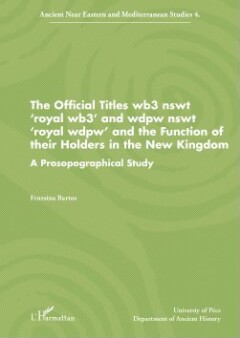Page 122 [122]
original placement of the statue. However, references to the temple in the inscription or
the place of discovery themselves cannot serve as conclusive evidence for the original
place of the statue. The inscription on the back is an autobiographical part which informs
us that Neferperet brought back seven bulls as booty from a campaign in Retjenu with
the permission of the king in order to offer them as a donation to the memorial temple
of Thutmose III. These kinds of private endowments to temples or temple statues of the
king were common, most frequently with a funerary purpose. The objects of the dona¬
tion and the exchange for it, namely for a personal offering cult, were recorded in
contracts, and required royal consent. In some cases, however, the endowments were
conveyed during the life of the donor, as in the case of Neferperet as well.4°* The inscrip¬
tion contains the act of donation, as well as the protection guaranteed by the royal
residence: it assures the authority of Neferperet over the animals that would be taken
over by his heirs after his death, not by the overseer of the cattle. The text also mentions
some members of the family of Neferperet: his brother, Amenemmehib, who was the
guardian of the cattle, and his son, Djeserkare,*”? who carried the milk jars, which were
supposedly to be presents to the gods in the temple daily, and which were then the benefit
of Neferperet as well.
It is not known until when Neferperet was active in his office. Based on the type of
the wig on his stelophor statue, which is similar to wigs of statues under Amenhotep II,
Bryan suggests that the statue be dated to the later phase of the reign of Thutmose III.”°
It is conceivable that Neferperet remained in office under Amenhotep II as well, although
there is no evidence of this.
IIL.5. Wah
Date: Thutmose III (?) — Amenhotep II (?) (based on the stylistic criteria of the
tomb structure and decoration)
Genealogy: unknown
Tomb: Theban Tomb 22
Remains: — tomb structure
Functional titles: wb3 nswt
4°8 For private endowments and the case of Neferperet, see Haring, 1997, 142-147.
“°° Legrain wrongly identified Djeserkare as the father of Neferperet. Legrain, 1908, 92.
#° Bryan — Hornung, 2002, 92; Bryan, 2006, 89.

